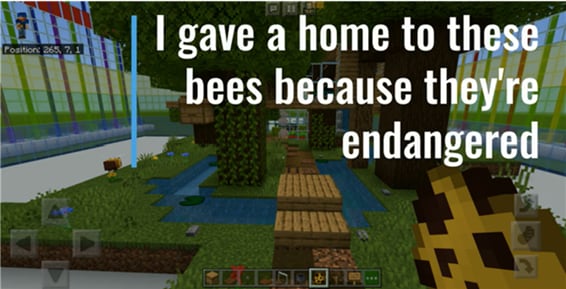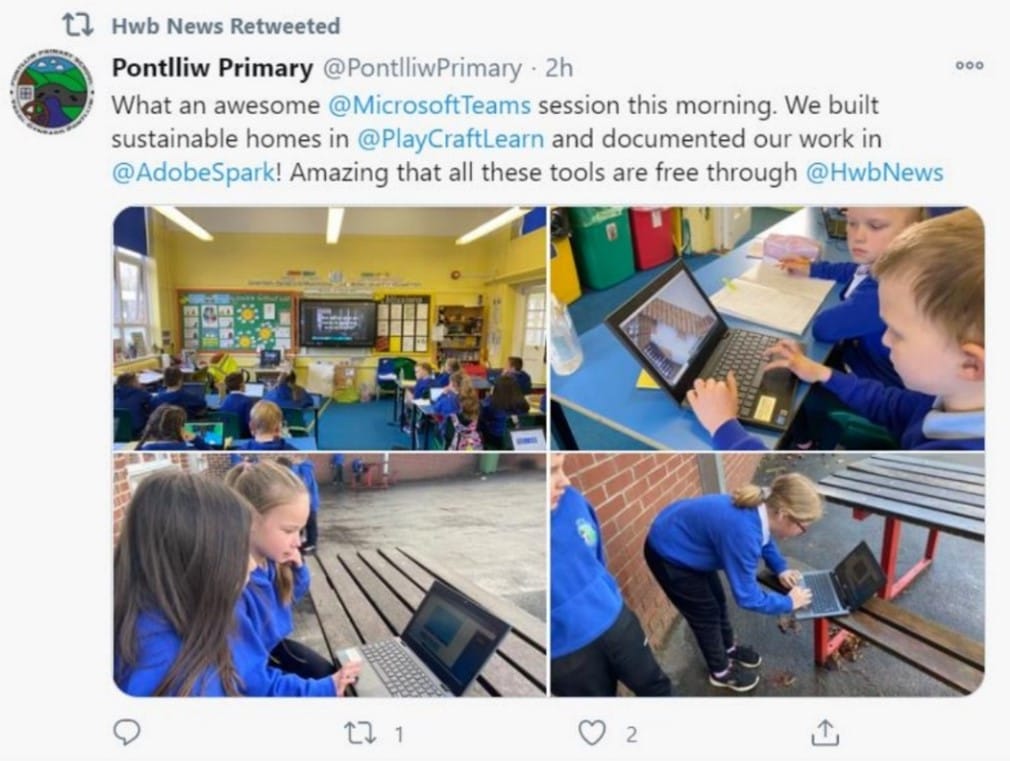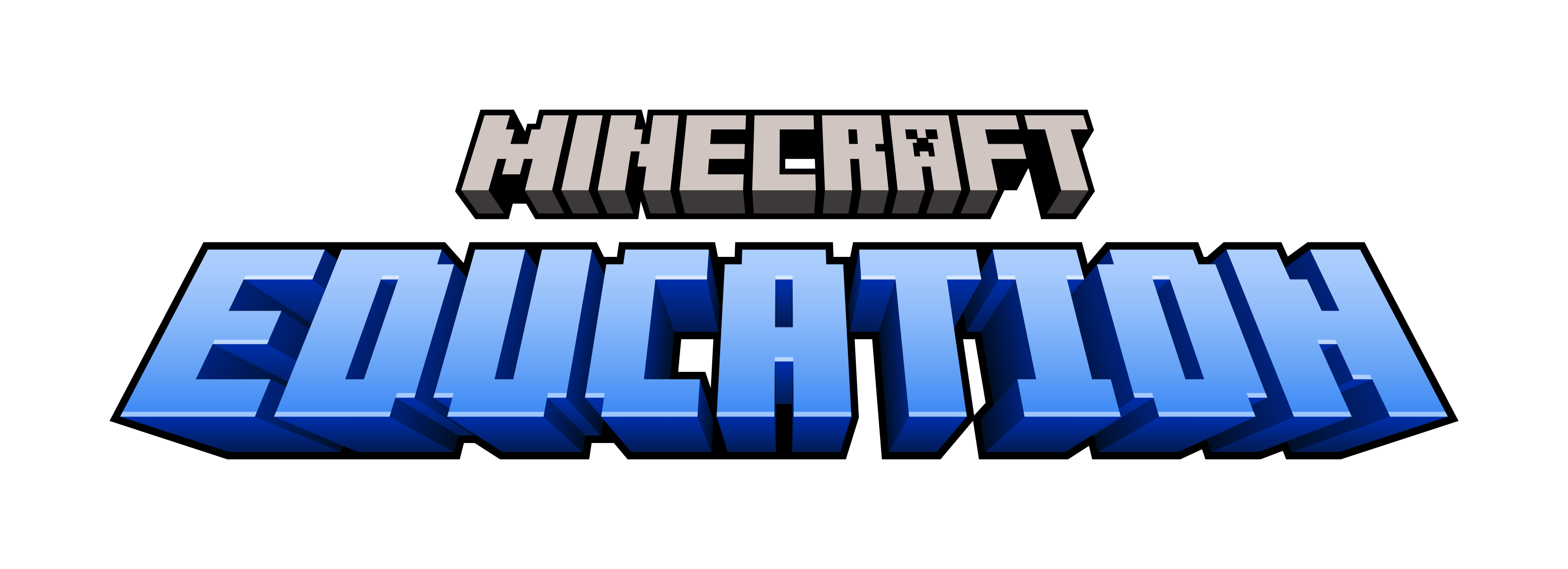“Mission Earth” – A virtual STEAM workshop series in collaboration with Adobe
13 Aug 2021

Setting the stage for deeper learning, creativity, and sustainability practices inspired a new project from educators in the UK: Mission Earth! Microsoft teamed up with Adobe Spark for this project, creating an immersive learning experience with a focus on climate change, where students designed their own versions of a working sustainable home! Since June 2021, educators can access all of the resources for their own students, including a recorded version of the session to project in their own classroom. Follow along as guest writer, Benjamin Rommel, shares this story, its impact, and a few student examples.
What is ‘Mission Earth’?
Launched in November 2020, Mission Earth proved incredibly popular with teachers and students. Our aim? To give young people the opportunity to research, build and create sustainable living spaces using Minecraft: Education Edition and Adobe Spark, even in a hybrid classroom setting. So far, 2,000+ students have taken part in Mission Earth and have created some amazing sustainable homes.
Delivered by the Microsoft Experience Centre team and Adobe Education Specialists, Mission Earth! encourages students to develop creative solutions and to address environmental sustainability in a custom Minecraft world, and to present their ideas using Adobe Spark. The series was designed and tested by our own Microsoft MIEEs and Adobe Creative Educators.
But why? Today there is more concern for our environment than ever before. With climate change and sustainability, a hot topic in today’s news, we want to make sure we’re doing everything we can to help, and we need students’ help! We need creative minds to help us think how we can live more sustainably and save our planet. Think you could take on Mission Earth?

Why Minecraft?
It has sheep, pigs, zombies, even a dragon, and is hugely popular amongst young people (and a lot of nostalgic adults!). It’s one of the most popular games of all time, with 20 million users across various platforms, and educators are increasingly using the game as a teaching tool.
With schools closing in the wake of the Covid-19 outbreak, and education shifted to home schooling, for some students being at home may seem more like play time than study time. For many, the drastic change of environment and the increased number of distractions have affected their ability to learn. Schools needed to develop new learning practices which fit into the curriculum and provided high-quality, accessible learning to their students. This is where Minecraft comes in.
Our target audience is aimed to primary and secondary students between the ages of 8 to 14. A critical age range considering the government’s GCSE result report last year, where we have seen an overall reduction in students undertaking STEM subjects, including:
- A 2.1% decrease in students taking computing.
- A 1.1% decrease in students taking design and technology.
- A 3.4% decrease in students taking engineering.
Source: GOV.UK
How does Mission Earth tackle this problem? By encouraging students to practice digital skills, using IT and using gaming skills, Minecraft is an immersive and engaging environment students can get themselves lost in. The research and planning for this session teaches students independent study skills, and encourages problem solving as students design a home that is both practical and sustainable. The building aspect of the session is a great way for students to learn the basics of computer modelling, and transferring conceptual ideas into a visual representation. Finally, creating a Spark video ensures students have the opportunity to explain their thought process and present their work in a creative way.

But what is the context?
What happens when you join Mission Earth? You’ll meet our amazing Mission Control team, who are going to introduce you to Minecraft and Spark and guide you through the bespoke Minecraft world.
Your first instructions are to learn more about your mission. Think about Why, What and How to pull off the mission and save the Earth! Next up, you’re launched to the planning zone, this is your chance to pull together all those ideas and draw up your design. What features make your home sustainable? How are they going to save the planet? Could you live in this house?
You won’t have long to do this and we’re on a mission. Let’s move on and build your design. Remember, your job is going to be to convince people to live more eco-friendly, so we need to make this place look good! Is there enough space in this house? Do we have all the practical features? A bed? A way to keep warm. Show off how you’re going to do all these things while sticking to the challenge.
3.. 2.. 1.. Time’s up! You’ve built your home, it looks amazing, now we need to tell the world. With the help of Mission Control, head over to Spark to start creating your video. Add pictures of your build and tell us more. Why did you include solar panels? You’re keeping your house warm using plants? Cool! Tell us more!
And you’ve done it! Congratulations for completing Mission Earth! You’ve come up with some amazing ideas that could help us all live more sustainably, share your video with us and everyone you know to see what they’re up to, perhaps they learn a thing or two from you today.
What are our outcomes?
Since launching in November 2020, Mission Earth has managed to reach 2,200+ students, all of whom completed the mission having further developed their research skills, practiced designing and building in Minecraft, and gotten creative with their video creation. Feedback from teachers hosting the session with their class described it as “exciting” and “engaging”, they loved how it “made [them] learn about sustainable living” and “apply gaming skills from home into Minecraft Education”.
And students will be able to take these skills beyond the mission. Everything learnt in a session is applicable to the real world, and transferrable to all sorts of subjects. We problem solve every day, almost every career requires you to be able to explain and present your work, and we could all definitely learn to live more eco-friendly.
An amazing feature of Minecraft: Education Edition is that it is a student-led resource. Teachers connect us to the students and help set out the mission, but from here students take the lead! By deciding how they are going to utilise the resource and having full control, they’re given the freedom to truly take charge of their learning and create something brilliant!
The imagination and enthusiasm students put into their mission is clear in their work. From back-yard windmills to underground homes- we’ve seen it all! Students love the fast pace of the session and are keen to beat the clock, the race to save the Earth is on!

What does the future hold for ‘Mission Earth’?
We are now making Mission Earth available on demand. From June 2021, educators will be able to access all of the resources, including a recorded version of the session to run in their own classroom! All resources and information will be available on Microsoft’s Explore the digital future Programmes site and at Adobe Education Exchange.
Completing Mission Earth also gives students a step ahead in digital skills and gives them more opportunities to explore. Could they find a passion for sustainability? With the increasing impact of climate change on our environment, we need enthusiastic individuals who can not only come up with creative solutions, but put them into practice and convince others to do so too.
Mission Earth has brought together the best resources from Microsoft and Adobe, giving students the opportunity to experience both Minecraft and Adobe Spark in the classroom. Students should now be empowered to create their own missions to further explore what they are passionate about. Together, let's prepare young people for the technology-driven world of tomorrow through forward-thinking initiatives such as Mission Earth.


